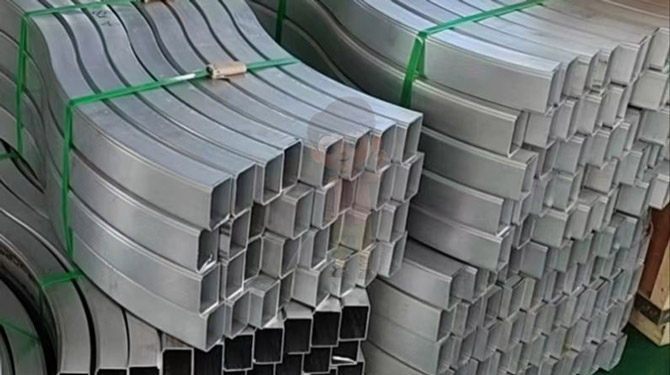The Application and Challenges of Precision Bending in the Aerospace Field
Precision bending is a vital manufacturing process in the aerospace industry, where the need for high-quality, lightweight components is paramount. This technique involves the careful bending of materials to achieve specific geometries and tolerances, essential for components used in aircraft and spacecraft. As the aerospace sector continues to evolve, understanding the applications and challenges of precision bending becomes crucial for manufacturers aiming to meet rigorous industry standards.
Applications of Precision Bending in Aerospace
1.Structural Components
Precision bending is extensively used to produce structural components such as frames, brackets, and supports. These elements must withstand various stresses and strains during operation, necessitating precise geometric configurations and material properties. For instance, the fuselage and wing structures of aircraft often incorporate bent components to optimize strength-to-weight ratios.
2.Tubing and Piping Systems
In aerospace applications, tubing and piping systems are critical for fluid and gas transport. Precision bending allows manufacturers to create complex shapes that fit within the tight confines of an aircraft or spacecraft. For example, hydraulic lines and fuel lines often require bends that minimize pressure drops and ensure efficient flow.
3.Custom Components for Avionics
Precision bending also plays a significant role in creating custom brackets and housings for avionics systems. These components must meet stringent dimensional tolerances and are often made from lightweight materials like aluminum or titanium to reduce overall weight. The ability to create intricate shapes through bending allows for optimized designs that enhance functionality within the limited space of aircraft cockpits.
4.Heat Exchangers
In aerospace applications, heat exchangers are essential for managing thermal environments. Precision bending is utilized to shape the tubes and fins of heat exchangers, ensuring maximum surface area for heat transfer while maintaining structural integrity. This is particularly crucial in high-performance engines where thermal efficiency can significantly impact performance.

Challenges in Precision Bending for Aerospace
1.Material Limitations
One of the primary challenges in precision bending is the selection of appropriate materials. Aerospace components often require high-strength, lightweight materials such as titanium, aluminum alloys, and composite materials. Each material behaves differently during bending, presenting unique challenges such as springback (the tendency of the material to return to its original shape) and risk of cracking. Understanding these properties is essential for achieving the desired geometries without compromising the material integrity.
2.Tolerances and Quality Control
The aerospace industry is known for its stringent quality control standards. Components must often meet tight tolerances, which can be difficult to achieve in precision bending processes. Variations in material properties, bending techniques, and equipment calibration can lead to deviations that may not be acceptable for aerospace applications. Implementing rigorous quality control measures and advanced inspection techniques, such as 3D laser scanning, can help mitigate these issues.
3.Complex Geometries
As aircraft designs become more complex, the geometries of components also increase in intricacy. Precision bending must adapt to these new designs, which can require advanced tooling and bending techniques. The development of custom dies and fixtures may be necessary to accommodate unique shapes, leading to increased costs and longer lead times.
4.Technological Advancements
The rapid pace of technological advancement poses both opportunities and challenges for precision bending in aerospace. While new machinery and software can enhance bending capabilities, integrating these technologies into existing processes can be challenging. Manufacturers must invest in training and development to ensure that their workforce is skilled in using advanced bending equipment and software solutions.
5.Cost Management
The aerospace industry is highly competitive, and managing costs while maintaining high-quality standards is a constant challenge. Precision bending processes can be expensive due to the need for specialized equipment, skilled labor, and rigorous quality control measures. Manufacturers must find ways to streamline their processes and reduce waste without sacrificing quality, which can be a delicate balance to achieve.
Precision bending plays a crucial role in the aerospace industry, enabling the production of lightweight, high-strength components that meet stringent performance standards. While the applications of this technique are vast, challenges such as material limitations, tolerance requirements, and technological integration must be carefully managed. By investing in advanced technologies and training, manufacturers can overcome these challenges, ensuring that they remain competitive in a rapidly evolving industry. As the demand for innovative aerospace solutions continues to grow, the importance of precision bending will only increase, making it an essential area of focus for manufacturers and engineers alike.
16
2025-10
Number of visitors:1
HOT NEWS
-
Reducing the rebound error of car bumper bending enhances the stability of mass production.
2025-12-17
-
High-precision bending processing service: Automated bending process
2025-12-08
-
High-Accuracy Curve Forming: Achieving Consistent Bends in Aluminum, Steel, and Alloy Materials
2025-11-27
-
Advanced CNC Tube Bending Technology: Achieving Consistent and Reliable Precision in Complex Shapes
2025-11-17




 English
English Chinese
Chinese Japan
Japan German
German

 LIST
LIST
